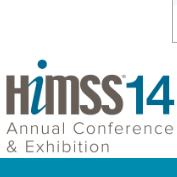In the healthcare world, the term “big data” isn’t always cast in a positive light. Healthcare workers worry about being flooded by irrelevant information, resulting in alert fatigue and causing truly salient data to be overlooked. They worry that big data is just another term for too much data.
In the healthcare world, the term “big data” isn’t always cast in a positive light. Healthcare workers worry about being flooded by irrelevant information, resulting in alert fatigue and causing truly salient data to be overlooked. They worry that big data is just another term for too much data.
In reality, this perception focuses too much on the “big” part of big data and fails to give credit to the advancements in today’s modern business intelligence solutions. Far from creating more noise, these advanced tools help users analyze and sift through data — surfacing what’s relevant and making the work easier, smarter, and safer for both healthcare workers and their patients.
The Benefits of BI Today
Data dashboards are already being widely used in healthcare, but the industry should continue to incorporate more modern BI products as their value becomes increasingly apparent. Here are some major ways big data is already helping to change the healthcare industry for the better:
- Insurance provider benefits: With the number of providers across networks, it’s challenging to see how healthcare spending is used on a large scale, leading to coverage gaps and duplication. Through analytics and dashboard visualization, providers are given a clearer picture of healthcare spending, optimizing the care they provide to patients.
- Healthcare and hospital quality monitoring: Before big data, it was exceedingly difficult to get a broad view of patient outcomes and needs on any level larger than state or regional. Visualized data in these areas makes it possible for providers to reduce costs and increase quality by seeing how treatments correlate with outcomes, guiding the health sector toward smarter decisions.
- Streamlined emergency rooms: It’s no secret that the ER is often a rushed and disorganized place when it comes to tracking patients and their needs — such as which X-rays or tests need to be done or have already been completed.
Hospitals can use dashboards to track and see this information in a unified place. Staff will have a better overview of each patient and will be able to prioritize patient needs. These dashboards serve as data triage — push alerts and notifications can even update staff on needs in real time.
- Tailored patient healthcare: Big data is making it easier for doctors to say goodbye to “cookbook medicine” (i.e., giving every patient the same battery of tests) and decide on specific tests based on the big picture of a patient’s data, built over time throughout every network.
This may mean a reduction in unnecessary chest X-rays for asthma patients, as was the case for Texas Children’s Hospital. It could also mean better prediction techniques that allow for improved preventive care, as the University of Pittsburgh Medical Center experienced.
One-size-fits-all healthcare is quickly becoming a thing of the past, and these developments are only the beginning of what big data can do.
The Future of Big Data in Healthcare
Business intelligence promises to not only improve patient care, but to also cut costs and streamline the care process for hospitals and other healthcare facilities. Big data can provide value across every aspect of the healthcare industry, cutting costs from the supply chain to data management.
Big data is already having an impact, and as it continues to grow, it will fundamentally change the future of healthcare by providing timely, actionable, and important information when professionals need it. The value of this can’t be understated — taking away guesswork and confusion will save lives.
It won’t be overnight — given regulations and the slow pace of adoption in healthcare, it could take as long as a decade for big data’s full potential to be realized — but with every step toward big data, we get one step closer to a better world for both patients and doctors.





